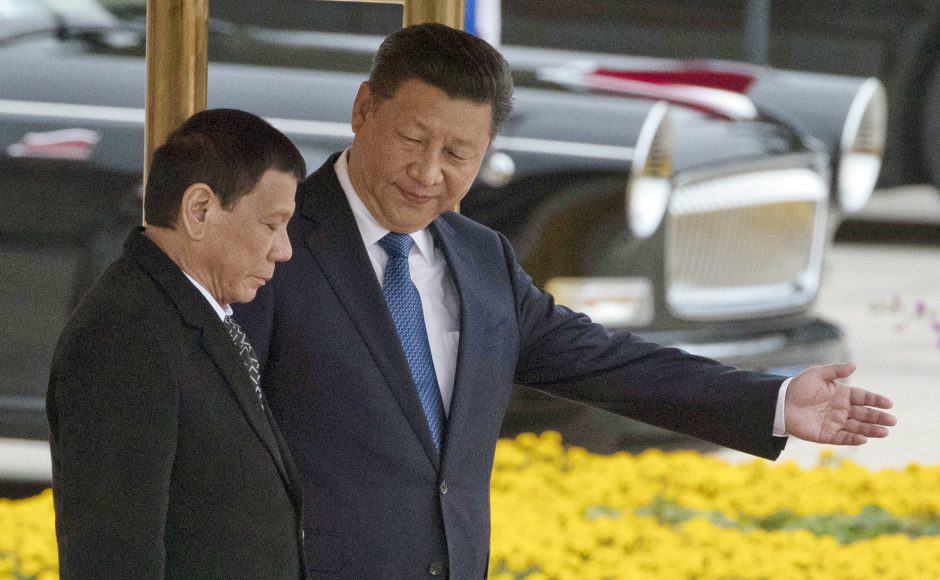
Not many countries have Presidents like Rodrigo Duterte. Known for his direct speaking style and intense campaign against domestic drug users, Duterte has provoked controversy ever since assuming the office of President this past June. However, such controversy has only caused problems abroad as Duterte enjoys broad domestic support, with 91% of Filipinos saying they trust and support their president. Duterte’s rhetoric has targeted several foreign governments and institutions, though many of his harshest words have been saved for the US and US President Barack Obama. Duterte famously called Obama a “son of a whore” and told him to “go to hell” for criticizing Duterte’s domestic policies, particularly his “War on Drugs” which has claimed the lives of an estimated 3,700 people in less than four months.
Tensions between the US and the Philippines reached new heights last Thursday when, during a visit to Beijing, Duterte announced his “separation from the United States. Both in military, not maybe social, but economics also. America has lost.” Duterte also expressed his desire to align with Russia and China saying, “I’ve realigned myself in your ideological flow and maybe I will also go to Russia to talk to Putin and tell him that there are three of us against the world – China, Philippines, and Russia. It’s the only way.” However, Duterte has walked back from this statement in the days since, saying that he did not plan to completely sever the long-standing alliance between the US and the Philippines. Several US diplomats have expressed concern over Duterte’s statements saying that they are “bad for business” and foster a “growing uncertainty.”
Though Duterte’s statements show a strong desire to break away from US control, it may prove difficult in practice. The US invaded the Philippines at the beginning of the 20th century, overthrowing its newly-formed republic and turning it into a US colony for all intents and purposes. The conflict, known as the Philippine-American war, claimed the lives of around 220,000 innocent civilians and the atrocities committed by US troops became internationally notorious. US forces also forced many Filipinos into internment camps during the war where they died in large numbers from disease and malnutrition. Though the Philippine-American War technically ended in 1902, the US did not grant independence to the Philippines until after the second World War in 1946 and, even then, the independence was largely in name only. Ever since, the US has counted on the Philippines as a strategic ally in the Pacific Ocean, key to its imperialistic plans to encircle both China and Russia with US military assets.
Though Duterte hasn’t cut off all ties with the US, he has complicated US ambitions in this regard. Duterte has publicly said on several occasions that he is leaning toward banning the presence of US troops on Filipino soil and has canceled joint patrols in the South China Sea. The South China Sea has become an international hot-spot as well as a major source of tension between China and the West. Duterte’s desire to foster growth with China directly threatens this key US objective. His appeal to Russia also conflicts with US foreign policy goals. It is certainly admirable that Duterte is seeking to end the long-standing oppressive relationship between the US and the Philippines, though it still remains to be seen whether he will be ultimately successful or will fall victim to US-backed regime change – a common fate for uncooperative leaders of countries key to US plans.
What are your thoughts? Please comment below and share this news!
This article (After 114 Years of US Control, The Philippines Expresses Desire to End Alliance) is free and open source. You have permission to republish this article under a Creative Commons license with attribution to the author and TrueActivist.com


